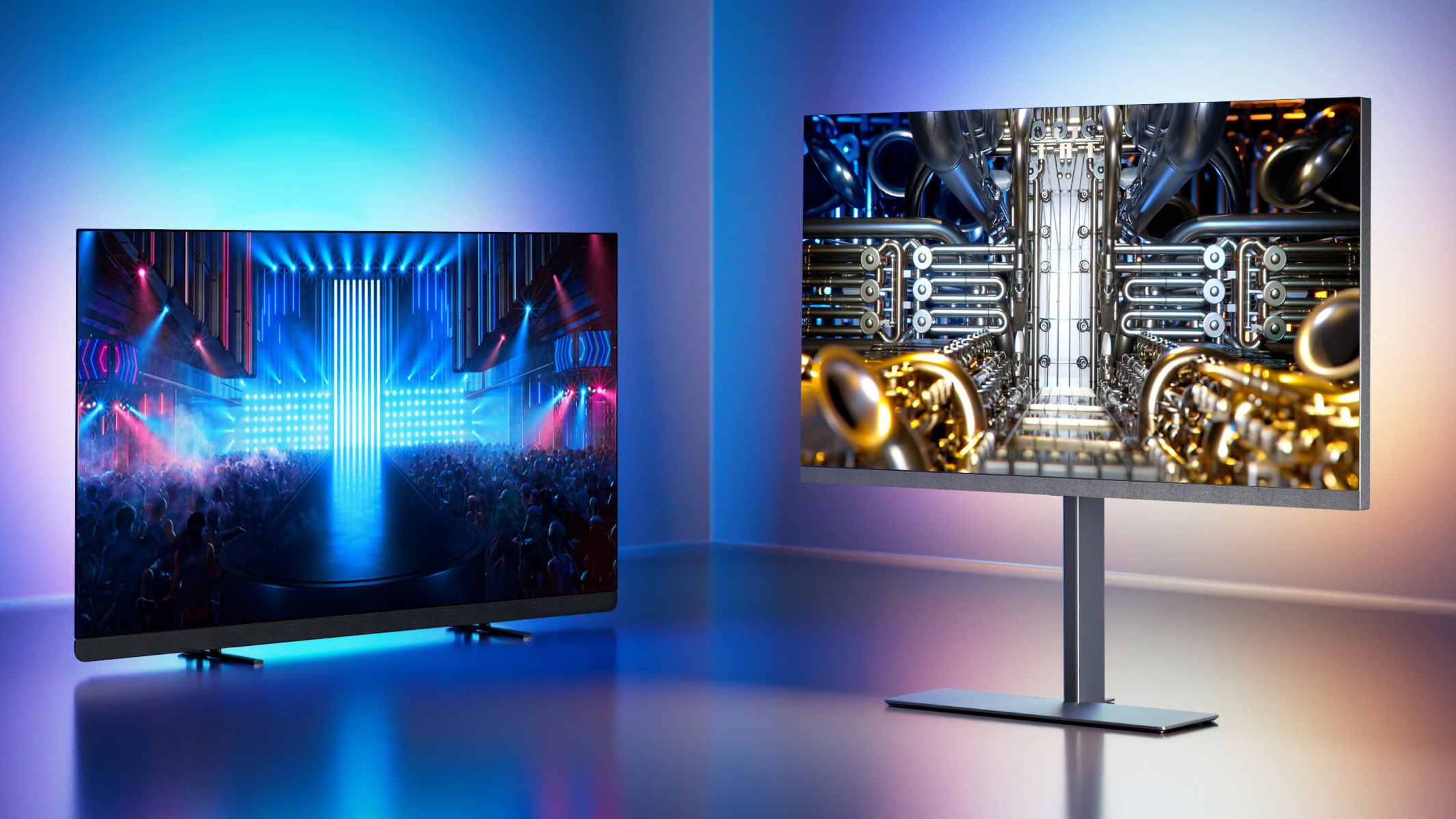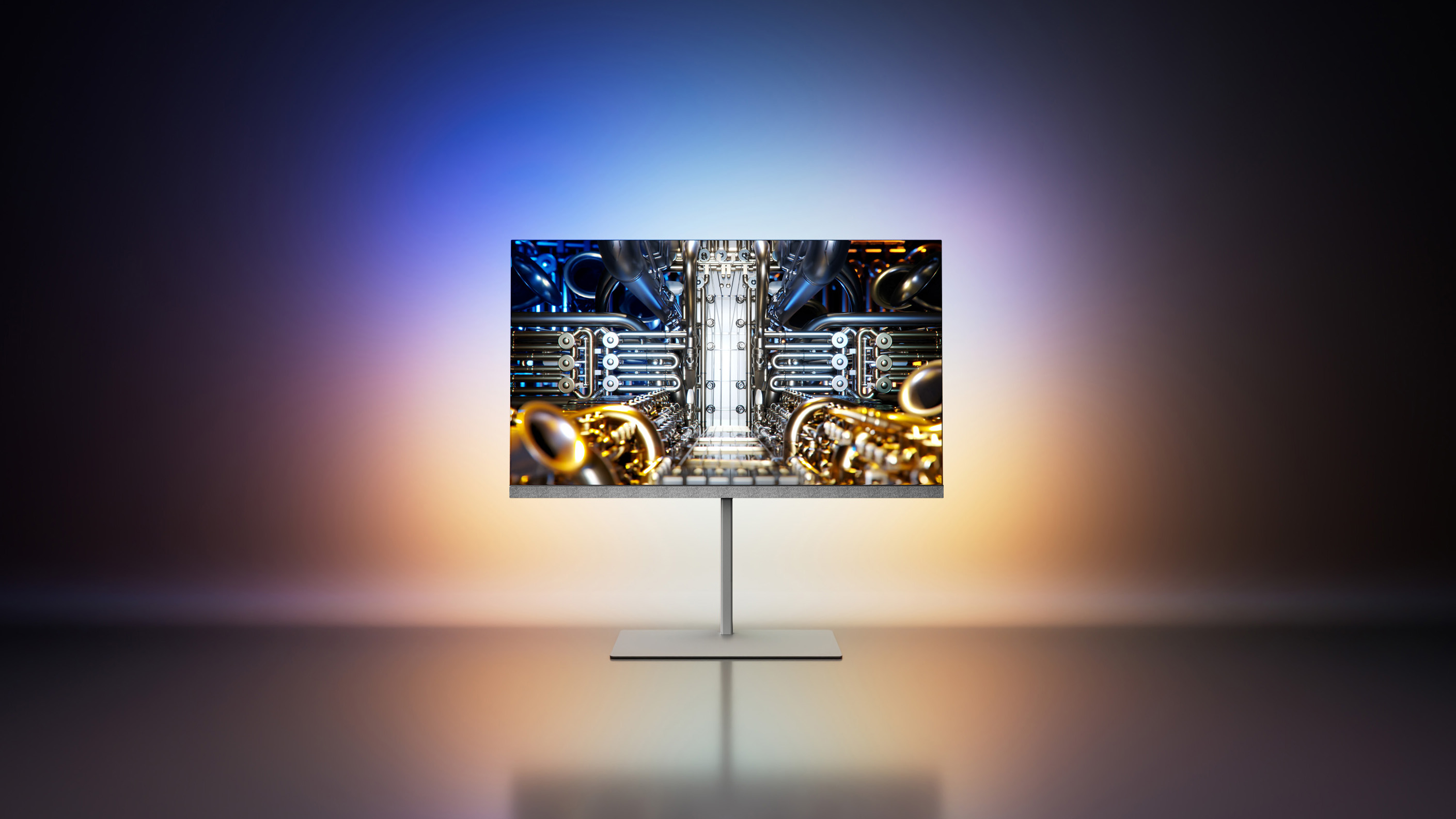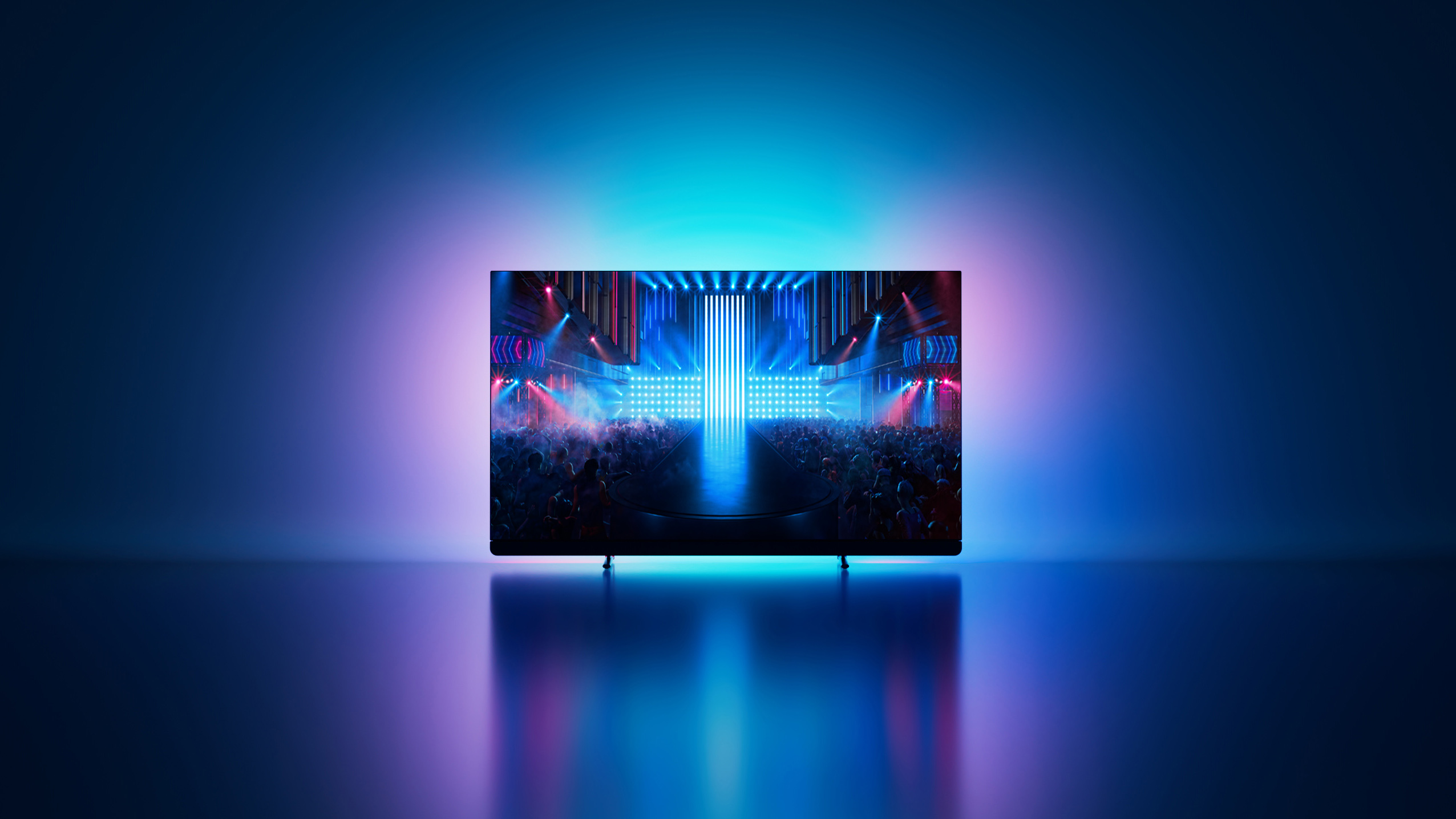
Hot on the heels of the world's largest technology show, CES 2024, we've already been treated to a host of brand new tellies due out in 2024. But beyond the best new OLED panels – such as the LG OLED G4, and wireless LG OLED M4 – there's suddenly a surprise post-show announcement that looks set to bring a world-first OLED panel to market.
I'm talking about the Philips OLED 959 all-new flagship (with integrated soundsystem) and Philips OLED 909, both of which embody an OLED panel that's said to push as bright as 3000 nits (about 30% brighter than other best-in-class recent reveals, such as the Panasonic Z95A) that, when it goes on sale apparently in the third quarter of this year, is set to be the brightest OLED consumer set on the planet.
Not that Philips makes its own panels: the OLED 959 and OLED 909 both source their display from LG, just as the majority of competitors do, so in part it's this later-in-the-announcement-cycle reveal that helps to give it the upper hand (at least on paper). This next-gen Micro Lens Array (MLA) panel ought to be rather retina-searing in its ability, to deliver high dynamic range (HDR) that's out of this world.

Not that it's all just about maximum nits and peak brightness (after all, most studios only master to a maximum of 1000 nits very most anyway, despite 4000 nit monitors being available), as Philips has other 'secret weapons' up its sleeve to help these OLED tellies stand apart from the competition. Principal to which is Ambilight.
If you're unfamiliar: Ambilight is a series of edge-positioned LEDs that illuminate surfaces around the TV, giving a wider-than-image real-time illumination that follows the action on screen. The OLED 909 upgrades its 908 predecessor with four-sided lighting. The OLED 959, however, goes up another notch by introducing Ambilight Plus, a version that uses a higher resolution for more dynamic results and a greater halo around the set.
Other major picture features include an 8th Gen P5 AI engine (a more advanced dual processor for the OLED 959 specifically) for improved upscaling and picture quality, plus support for Dolby Vision HDR. Gaming mode, meanwhile, nets a 144Hz maximum capacity (plus VRR) for future-proofing for the latest games consoles running via HDMI 2.1.

That'll make the OLED 959 look particularly astounding, especially with its integrated stand design which makes the 65-inch-only set appear to float. It's a design that, in some respects, echoes the OLED 986 flagship (released around 2020), except the gigantic Bowers & Wilkins soundbar-like soundsystem of that set has gone, replaced by a more discreet and integrated system instead.
Sound quality is another of Philips' major sells here: you needn't worry about buying one of the best soundbars with the OLED 959, as the Bowers & Wilkins partnership elevates sound quality to another level. It's an increasingly competitive area of the market, though, with the likes of Panasonic's Z95A also presenting a major soundsystem integration.
Pricing and specific availability will be revealed closer to launch, with the Philips OLED 909 available in 55-, 65- and 77-inch sizes, while the Philips OLED 959 is solely available in a 65-inch model with integrated stand. Further down the range will be the OLED 809 (with non-MLA OLED EX panel) and Philips' Mini LED and LCD models, 'The One' and 'The Xtra' respectively.







